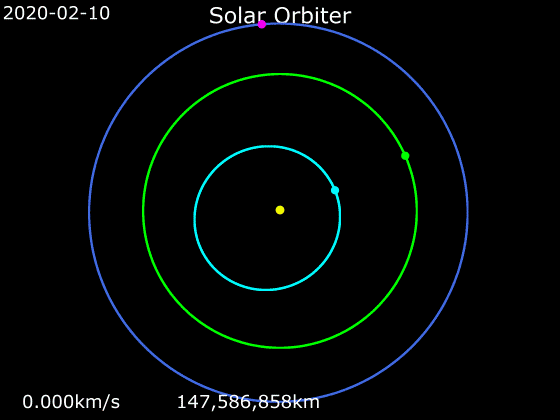Despite the COVID19 setbacks, the Airbus team for ESA’s Solar Orbiter spacecraft has successfully completed the In-Orbit Commissioning (IOC). Solar Orbiter made its first close approach to the Sun on 15th June of this year, getting as close as 77 million kilometres to the surface of the sun (about half the distance between the sun and Earth). That is the point in its orbit closest to the sun. A week after this first perihelion, the mission scientists started testing the spacecraft’s ten science instruments, including the six telescopes on-board. Thus they completed painstaking technical verification, known as commissioning. Due to Covid19 pandemic, all these works were done by the team being on “work from home” system. This is the first “virtual” ESA Mission Commissioning Results Review (MCRR).

“In the four months since launch, we have been keeping an eye on every move to make sure Solar Orbiter performs as it should. If someone had told me in February that we would be doing the in-orbit commissioning while working from home I would have been horrified – but in the event, the teams all worked perfectly together online and we achieved it without a hitch,” said by Ian Walters, project manager for Solar Orbiter at Airbus.
Peer Into The Guardian Of Solar System
The Solar Orbiter will grant us with the closest images of the sun ever captured. Daniel Müller, ESA’s Solar Orbiter Project Scientist, claims that the images will be released in mid-July. Even though NASA’s Parker Solar Probe (launched in 2018) makes closer approaches than Solar Orbiter, it can’t take a closer look at the sun directly. Because the Parker Solar Probe doesn’t have any telescopes capable of carrying out such activity.
Daniel says, “We have never taken pictures of the sun from a closer distance than this. There have been higher resolution close-ups, e.g. taken by the four-meter Daniel K. Inouye Solar Telescope in Hawaii earlier this year. But from Earth, with the atmosphere between the telescope and the sun, you can only see a small part of the solar spectrum that you can see from space.”
The data from the four in-situ instruments that measure properties of the environment around the spacecraft are also being analyzed. All these early observations are just to ensure that Solar Orbiter’s telescopes are ready for future scientific observations. The main science work of this spacecraft hasn’t begun yet. The next major event for Solar Orbiter is going to happen at the end of December 2020. That is its fly-by of Venus. With the help of the gravity of Venus, spacecraft will shift its orbit so that it can take a look at the Sun from higher latitudes and get the first-ever proper images of its poles.

Solar Orbiter will complete another perihelion in early 2021. Its cruise phase will last until November 2021 and the main science will occur in early 2022. During that phase, the spacecraft will get as close as 42 million kilometres to the Sun’s surface. The entire science world is eagerly waiting for its success. Click here to read more about the purpose of this mission and the different instruments implemented on this spacecraft.









One thought on “SOLAR ORBITER: GETTING CLOSER TO THE SUN”
Comments are closed.